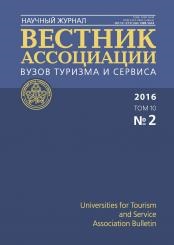The sculpture and monuments of Volgograd are discussed in the article as cultural and symbolic objects expressing the local identity and the defining image of the city, and also as resources for branding areas. Field studies and analysis of publications in print and electronic media showed that in the period from 2006 to 2016. in Volgograd, it was installed about 50 different sculptural forms and art objects – sculptures, memorials, monuments, small architectural forms. The author carried out a content analysis of the sculptural text and made the classification of monuments installed over the last 10 years. There were identified dominant themes and motifs, proving the irreducibility of the identity of Volgograd to a common denominator with a predominance of heroic discourse of the Soviet past. Specific examples show that the development of object environment of Volgograd clarifies three main trends: the assertion of the identity of the city-hero, stream professional-corporate symbols, representation of the images of the pre-Soviet past, first of all, an appeal to the history and culture of Tsaritsyn. The empirical material of Volgograd highlights the key functions of modern urban sculptures and monuments: monumental, memorial, axiological, aesthetic, social, advertising, entertainment, cultural and educational. It’s stated that creation and promotion of a positive image of Volgograd as a modern city of cultural innovations is difficult in the absence of a developed strategy of cultural policy aimed at the use of intelligent, creative, real assets and the search for alterna- tive symbolic models.
Volgograd, urban sculpture, brand, identity, creative city, city of cultural innovation, cultural and symbolic politics, social and cultural design, local history, culture-forming role of the monument
1. Abashev V.V., Perm monumental rhetoric of local identity: monuments, emblems and art objects in the city space. Labirint, 2015, no. 1, pp. 66-79. (In Russ).
2. Voinitskii P.V., Demonetarization: peculiarities of post-Soviet urban sculpture. Proceedings of the XIV International con- ference of students, postgraduates and young scientists «Lomonosov». Moscow: Izd. tsentr Fakul’teta zhurnalistiki MGU im. M.V. Lomonosova, 2007. (In Russ) Available at: http://www.lomonosov msu.ru/2007/session_arts.pdf.
3. Ignat’eva O.V., Lysenko O.V., Analysis of one of the project «Perm cultural revolution» through the eyes of a sociologist. Labirint, 2013, no. 5, pp. 69-80. (In Russ).
4. Nazarova M.P., Architectural monuments and their role in forming the social space of the city. Pamyat’ i pamyatniki: ma- terialy seminara (Memory and memorials: seminar proceedings), Volgograd: Izd-vo VolGU, 2012, 149 p.
5. Saenko N.R., Shipitsin A.I., Cultural-symbolical policy of urban sculpture. Voprosy kul’turologii, 2010, no. 12, pp. 80-85. (In Russ).
6. Trubina E.G., Gorod v teorii: opyty osmysleniya prostranstva (The city in theory: experiences of understanding the space), Moscow: Novoe literaturnoe obozrenie, 2013, 520 p. (In Russ).
7. Florida R., The Rise of the Creative Class. And How It’s Transforming Work, Leisure and Everyday Life. Moscow: Klassi- ka-XXI, 2005, 430 p. (In Russ).
8. Hollis L., Cities are Good for You: The Genius of the Metropolis. Moscow: StrelkaPress, 2015, 432 p. (In Russ).
9. Shipitsin A.I., Review of the book by Misurov D.A. «Symbols about symbols: Beginning of the cultural-symbolical policy». Izvestiya VGPU, 2010, no. 8(52), pp. 121-123. (In Russ).
10. Shipulina N.B., Cultural modes of a thing and material: rhealogical measurement of culture. Applied Sciences in Europe: tendencies of contemporary development, proceedings of the 1st International scientific conference. Stuttgart: ORT Pub- lishing, 2013, P. 27-29. (In Russ).
11. Landry Charles. The Creative City: A Toolkit for Urban Innovators. London: Earths can, 2000.





